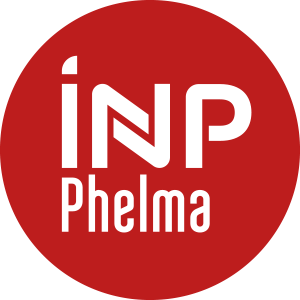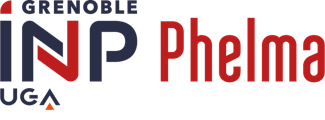Number of hours
- Lectures 12.0
- Projects 0
- Tutorials 12.0
- Internship 0
- Laboratory works 0
ECTS
ECTS 2.0
Goal(s)
Understand the issues specific to the physical layer of wireless networks. The first part offers an overview of mobile radio wireless channels (specificities - multiple paths, Doppler effect -, channel classes, types of problems and remedies). The second part gives practical examples of current radio technologies (ultra high bandwidth solutions, and ultra low consumption low bandwidth solutions).
Contact Olivier AYCARD, Simon FERNANDEZ, Laurent ROSContent(s)
Part I (prof Laurent ROS): Radio-mobile wireless communication channels
I1 - Specificity and Modeling of mobile radio communication channels (multipath propagation, complex baseband equivalent, Coherence Bandwidth and Cohence Time, Rayleigh and Rice variation model, Doppler Spectrum, etc.)
I.2 - Principle of transmit/receiver schemes for certain problems (Diversity techniques - for Rayleigh “flat fading” channels, OFDM multi-carrier modulation - for frequency selective channels-).
Part II (by Michel AYRAUD, senior engineer at STMicroelctonic): WLAN AND INTERNET OF THINGS: sUltra High Speed ??Wireless and Ultra Low Consumption Solutions
II.1 Introduction (Wireless, Radio basics: Link budget, LOS/NLOS range, Link capacity, Bandwidth and sensitivity, MIMO, modulations, Usable frequency ranges -Millimetric , From WiFi to GiFi-)
II.2 Structure of integrable receivers (Direct detection: gain/bandwidth problem, heterodyne frequency change, super heterodyne frequency change, Other possibilities, electronic antenna scanning, UWB), Practical example: ST solutions at 60GHz)
II.3 SOLUTIONS FOR IoT
- The Bluethooth Low Energy standard (Main applications, Main characteristics, Practical solution: BlueNRG-MS and STM32WB from STm)
- SIGFOX long distance communications (Main applications, Main characteristics, Practical solution: S2_LP from STm)
Prerequisites
Basic courses in "Digital communications" (or Data transmission), "signal processing" and "electronics systems".
Session 1 :
Written examen (50%), continuous control / home report (50%)
Session 2 :
Written examen (50%), and mark of the continuous control / home report of the Session1
For witten exams : No documents are permitted, except for a handwritten double-sided A4 sheet. Calculators are permitted.
Session 1 :
Examen écrit (50%) , contrôle continu (50%)
Session 2 :
Examen écrit (50%) et note du contrôle continu de la première session (qui ne se rattrape pas)
D. Tse, and P. Viswanath , « Fundamental of Wireless Communication », Cambridge University Press, 2004,
L. Hanzo et al, « OFDM and MC-CDMA for braodband and multi-user communications, WLANs and broadcasting », Wiley, 2004
J. Proakis. Digital Communications. McGraw-Hill, 2000.



